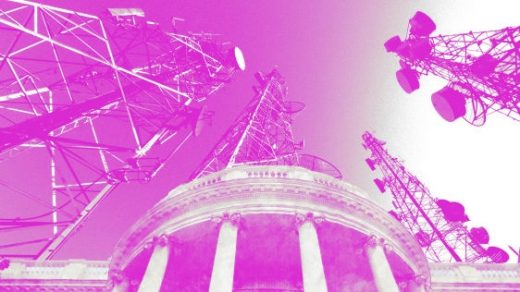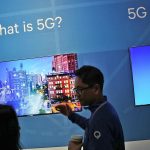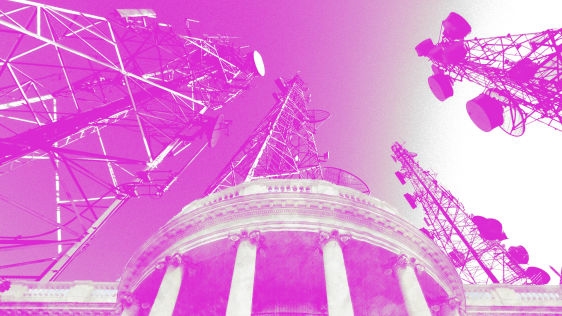A Nationalized 5G Network Could Settle Network Neutrality For Good
The Trump administration’s idea of nationalizing 5G networks isn’t crazy. In fact–setting aside the obvious privacy issues for a moment–it may be the one thing that could settle the debate over network neutrality once and for all.
Background: A National Security Council staffer allegedly floated the idea of a government-run 5G network as a way of better fending off Chinese hackers, Axios reported late Sunday. The U.S. wireless carriers would then lease space on the network to distribute their 5G service.
Sensing an existential threat to Big ISPs (and possibly a usurping of the FCC’s power) FCC chairman (and former Verizon lawyer) Ajit Pai dutifully and immediately released a statement opposing the idea. A Recode story Monday cited unnamed administration sources saying the proposal was out of date and not currently being considered. AT&T said it’s 5G work “is already well down the road.” Verizon gave Fast Company a no comment.
It was a bombshell story for sure, and none of the reporting–nor the White House–has completely shut the door to a government-built-and-operated 5G network. The idea certainly has its downsides–serious ones–but the idea has its upsides, too.
In the telecom industry, nobody really believes anything was settled when the Pai FCC voted to repeal network neutrality rules in December. The single rule the big ISPs care about most is the one that prohibited the sale of internet “fast lanes” to internet companies that could afford it.
“This type of plan could effectively solve the net neutrality problem,” said Dan Hays, a partner in the global tech, media, and telecom practices at PwC. “You would have one network and one set of rules–the government’s rules.”
The carriers believe that because they built and operate today’s 4G networks they should be able to do what they like with them, that is, monetize them. But if the government owns and operates the network, that dynamic is turned on its head.
Security Benefits
The security benefits to a government 5G network are real, too.
In theory, a single 5G network might be easier to protect than numerous networks run by competing companies. Monitoring for threats might be faster and more complete. Mitigation might happen before damage was done, property stolen. Security updates might be distributed more quickly. Perhaps more importantly, security hardware and software could be built into network systems from day one, not be bolted on later, as has been the case for so many that have suffered attacks.
Not that centralization is everything. “Conceptually, if you were to have a single infrastructure it would more than likely be more secure against threats,” said Cooper Levenson attorney and security expert Peter Fu. “But there’s also this problem of honey-potting all of your security infrastructure in one place, and that just doesn’t work in the real world.” Fu says he advises clients to distribute their security resources to multiple servers on the network so that hackers can’t disable security protections by attacking just one spot.
Two types of security technology are needed to protect a wireless network, Fu says. One type of security is designed to protect the physical network–the cell towers and radios. Then there’s the security software and systems needed to protect the technology platform. The government would be great at securing the physical part, Fu says, but probably lacks the resources for the second.
Spectrum
A national 5G network might simplify the spectrum situation. “You potentially could speed the rollout of 5G by making more efficient use of the spectrum that’s available,” says PwC’s Hays. Hays says the wireless spectrum needed for 5G could be allocated to just one network, instead of sliced up and auctioned off to numerous network operators.
“Dig Once”
Building the physical infrastructure needed for wireless networks is extremely expensive. Much of the expense comes from the cost of burying fiber cables for “backhauling” wireless traffic from the cell towers to a central switch and the internet backbone. With only one entity building infrastructure, such digs could happen just once, instead of four or five times by different carriers, Hays pointed out.
Such a project is not without precedent. Australia began building its National Broadband Network (NBN) back in 2010, with the goal of providing fiber-based broadband service to the country, including to its secluded and sparsely populated parts (a feature shared by the United States). Hays says the government’s role as wholesale network operator has left Australian carriers to lease network space and focus most of their efforts on marketing and customer experience.
Privacy Issues
The biggest downside of nationalized 5G is personal privacy.
“The government is in the business of creating security threats,” Cooper Levenson’s Fu says, referring to federal law enforcement’s constant efforts to access data from consumer networks and devices as evidence. The government, Fu explains, is incentivized to install the security backdoors the FBI or the Department of Justice want for easily accessing personal data.
“The idea that they could just walk in and take your data from your mobile phone and all your travel data–that’s not a good thing,” Fu said. “If the government owns the infrastructure what’s stopping them from doing that?”
Politics
The politics of a government 5G network might be more nuanced than it first appears.
Turning the country’s wireless companies into resellers of a government network would completely change the business model. The telecommunications and cable lobbyists would be in full-court-press mode to dissuade the Trump administration from taking on such a project. And they would cast doubt on the government’s ability to handle such specialized work.
Like AT&T has already done, the companies would be quick to point out that they’ve already invested a lot in the move to 5G, from R&D to network equipment to wireless spectrum. Verizon and T-Mobile have already said they will begin building their 5G networks this year. Part of the 5G wireless standard was approved in December 2017, with the next major pieces expected to be finished in June 2018.
On the other hand, as PwC’s Hays points out, a national 5G network would create jobs. “This notion of a national investment in 5G is 100% consistent with the administration’s interest in investing in infrastructure–that was one of its core tenets all along,” Hays said. Large infrastructure projects were one of Trump’s big campaign promises during the 2016 elections. But after a year of healthcare, tax reform, and immigration fights, infrastructure has barely been touched.
Fast Company , Read Full Story
(19)














